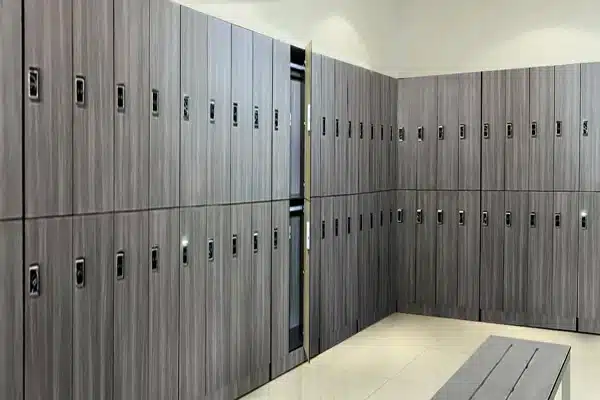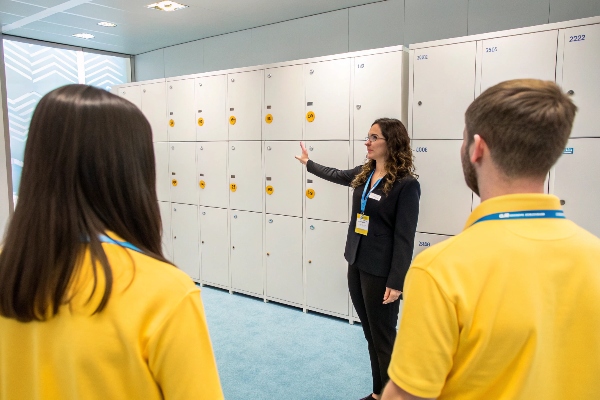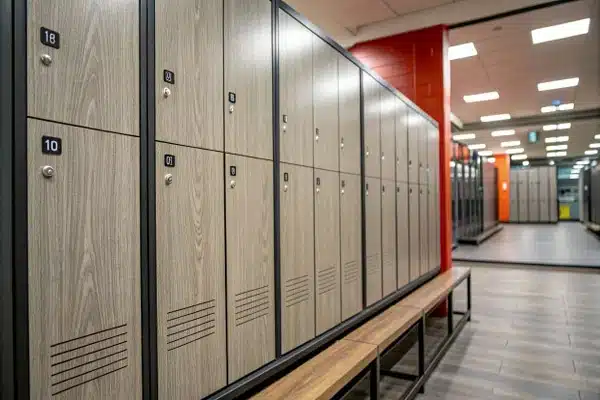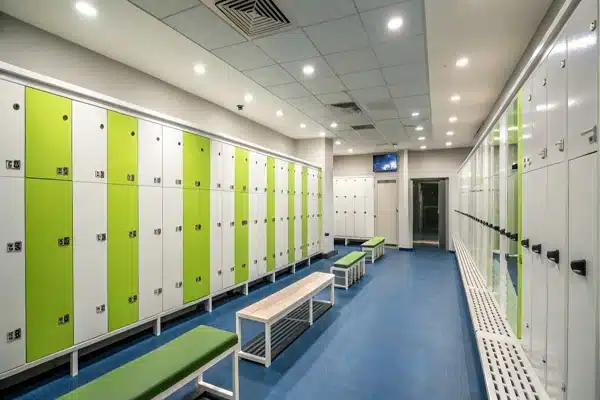Choosing the right lockers for school changing rooms can significantly impact students’ daily routines. The best lockers combine durability, functionality, and security to create an organized and safe space.
The best lockers for school changing rooms are made from durable materials like HPL1, feature ventilation systems2, and include secure locking mechanisms3. Customizable designs and color options can also enhance the space’s functionality and appeal.

In this article, we’ll explore what makes a good locker room, essential features for school lockers, and practical tips for choosing the right ones. Whether you’re upgrading or starting from scratch, these insights will help you create a student-friendly space.
What Should I Put in My Locker for School?
A well-organized school locker ensures that students have everything they need for their day.
Essential items include uniforms, gym clothes, textbooks, and personal belongings. Adding shelves, hooks, and compartments can help keep the locker tidy and functional.

Must-Have Items for a School Locker
| Item | Purpose |
|---|---|
| Uniforms or Gym Clothes | Keeps clothing clean and ready for use. |
| Textbooks | Provides easy access to study materials. |
| Personal Belongings | Stores items like water bottles, snacks, and accessories. |
| Organizers | Adds shelves, hooks, or compartments for better storage. |
For example, a school in Europe used modular lockers with built-in shelves and hooks to help students stay organized. The result was a more efficient and clutter-free space.
What Makes a Good Locker Room?
A good locker room combines functionality, durability, and thoughtful design to meet the needs of its users.
Key features of a good locker room include spacious lockers, proper ventilation, and secure locking mechanisms. Comfortable seating and lighting also improve usability and ambiance.

Essential Features of a Good School Locker Room
| Feature | Benefit |
|---|---|
| Spacious Lockers | Provides ample storage for clothes and personal items. |
| Ventilation Systems | Reduces odors and keeps stored items fresh. |
| Secure Locks | Ensures the safety of students’ belongings. |
| Comfortable Seating | Offers ergonomic benches for students to sit and change. |
One of my clients in Asia upgraded their locker room with ventilated HPL lockers and anti-fatigue flooring. These improvements enhanced both functionality and comfort.
What Size is a Standard Changing Room Locker?
The size of a locker depends on its purpose and the needs of its users. For school changing rooms, lockers should be spacious enough to store clothes, shoes, and personal items.
A standard locker for school changing rooms typically measures 12 inches wide, 12 inches deep, and 72 inches tall. However, customizable sizes are available to suit specific needs.

Standard Locker Sizes for School Changing Rooms
| Size | Description |
|---|---|
| 12" W x 18" D x 72" H | Fits clothes, shoes, and personal items for one student. |
| Customizable Sizes | Adjustable dimensions to accommodate specific storage needs. |
| ADA-Compliant Lockers | Lower heights and accessible designs for inclusivity. |
A school in Australia installed custom-sized lockers to fit their students’ needs, including ADA-compliant lockers for accessibility.
What is the Difference Between Changing Room and Locker Room?
While both spaces serve storage and changing purposes, they have distinct differences in design and functionality.
A changing room is primarily used for changing clothes and often includes showers and benches. A locker room emphasizes storage and may include lockers for personal belongings and equipment.

Key Differences Between Changing Rooms and Locker Rooms
| Feature | Changing Room | Locker Room |
|---|---|---|
| Primary Use | Changing clothes, often with showers. | Storing personal belongings and equipment. |
| Layout | Focuses on benches, showers, and privacy. | Emphasizes lockers and storage space. |
| Design | Includes hygienic features like tiled floors. | Features durable materials and secure lockers. |
For example, a facility in Europe separated their changing and locker areas to improve functionality and hygiene.
Conclusion
The best lockers for school changing rooms are durable, functional, and secure. By choosing the right features and designs, you can create a space that meets the needs of students and staff.
What’s your experience with school changing room lockers? Share your thoughts in the comments below!
-
Explore how HPL enhances locker durability and functionality, ensuring a long-lasting investment for school changing rooms. ↩
-
Learn about the significance of ventilation systems in lockers to maintain freshness and reduce odors, enhancing student experience. ↩
-
Discover the importance of secure locking mechanisms in protecting students’ belongings and ensuring safety in school environments. ↩

